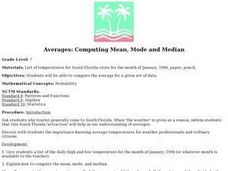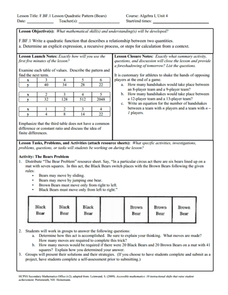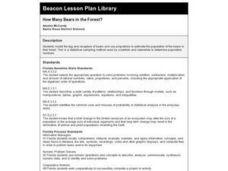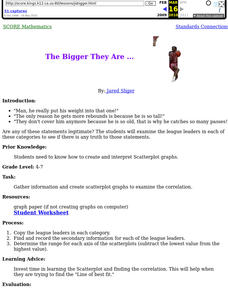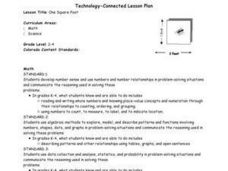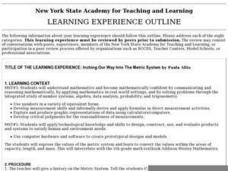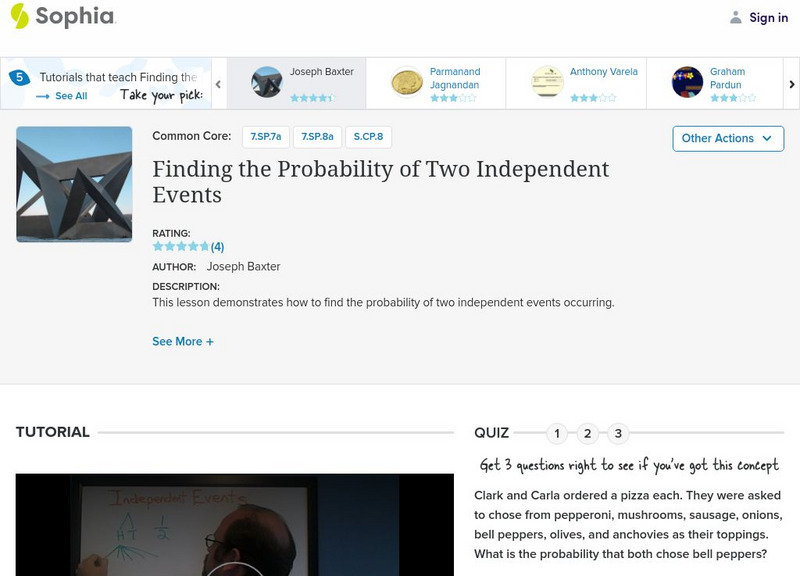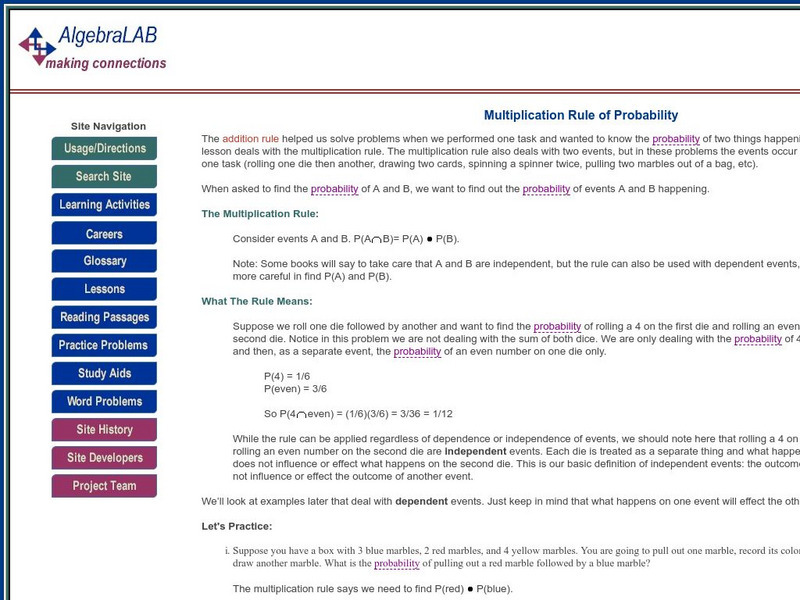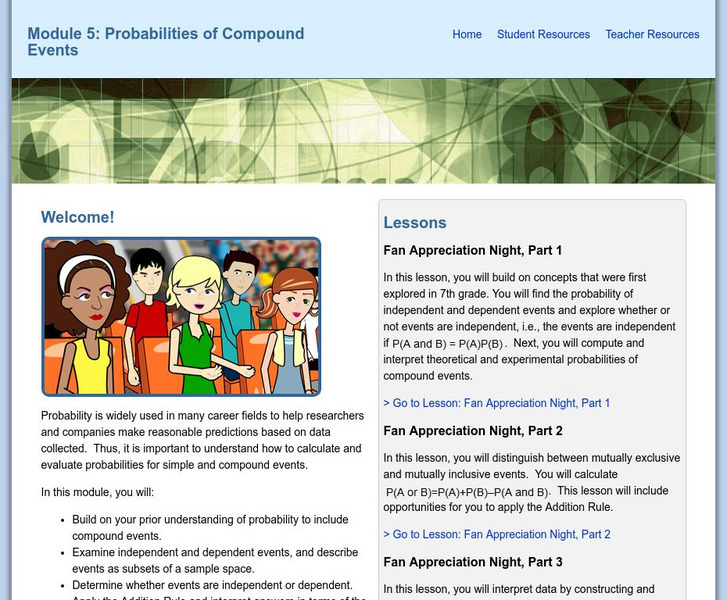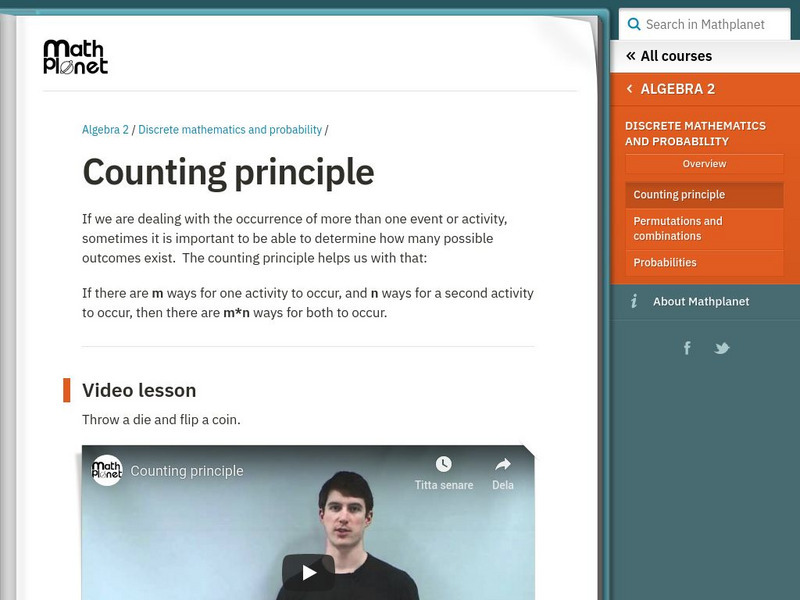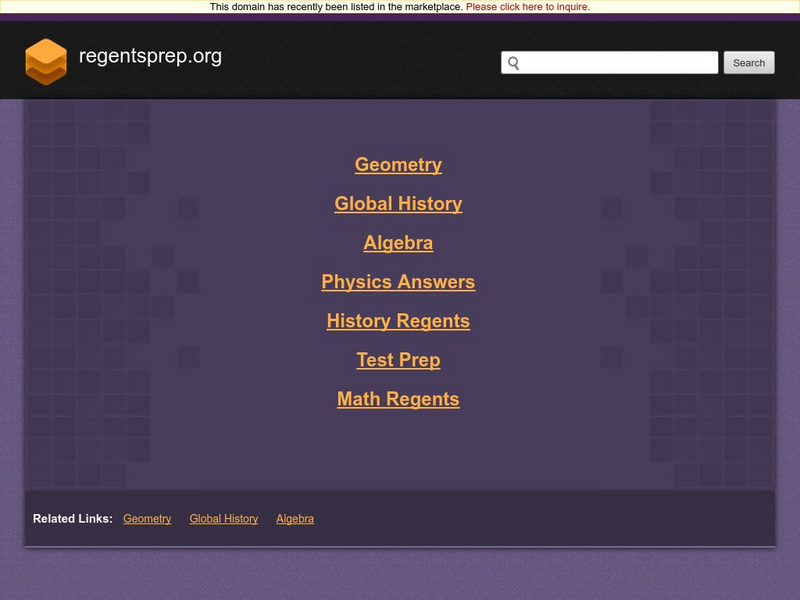Curated OER
Averages: Computing Mean, Mode and Median
Seventh graders use daily temperature models to find the mean, mode and median.
Curated OER
Bears
Students complete a variety of bear-related activities. They sort and graph teddy bears, distinguish between real and non-real bears and research bear life cycles and habitats.
Curated OER
Modeling Population Growth
Students investigate the reasons for taking a census and determine the problems that are involved in the process. They examine the population figure for Montana and Lake county before using the information to complete the included...
Curated OER
Calendar and Opening
Students review the days of the week and tell what the current day is by singing a song. They fill in the sentence telling the day of the week it is and then discuss what day yesterday was and the name of the day tomorrow and then talk...
Curated OER
From Molecules to Mole Day Do's
Students recognize methods used to define the mole. After converting various quantities to the mole, students provide a context for understanding the usefulness of scientific notation and the mole.
Curated OER
How Many Bears in the Forest?
Third graders model the tag and recapture of bears and use proportions to estimate the population of the bears in their forest. This is a statistical sampling method used by scientists and naturalists to determine population numbers.
Curated OER
The Bigger they Are . . .
Students do a variety of data analyses of real-life basketball statistics from the NBA. They chart and graph rebounding, scoring, shot blocking and steals data which are gathered from the newspaper sports section.
Curated OER
One Square Foot
Pupils identify, describe, count, tally, and graph life found in one square foot of land.
Curated OER
Inching Our Way Into The Metric System
Learners investigate the Metric System. They discuss the history of the Metric System, convert various units of measurement into the Metric System, and solve problems on a spreadsheet.
Curated OER
The Pythagorean Theorem
Students explore the concept of the Pythagorean Theorem. For this Pythagorean Theorem lesson, students discuss how the Pythagorean Theorem is used in their lives. Students imagine building a lean-to that is 3 ft. high and 4...
Sophia Learning
Sophia: Finding the Probability of Two Independent Events
Determine the probability of two independent events. Assess learning with a quiz.
Math Planet
Math Planet: Algebra 2: Probabilities
Discussion of probabilities through the use of examples and a video lesson. [0:35]
Oswego City School District
Regents Exam Prep Center: Theoretical Versus Empirical Probability
Use this site to learn the difference between theoretical and empirical probability. A practice page is included for each and two teacher resource pages contain classroom activities.
Other
Algebra Lab: The Multiplication Rule of Probability
An explanation with examples of how to calculate probabilities of two dependent or independent events by multiplying their probabilities. Practice problems are provided along with their explanations.
Thinkport Education
Thinkport: Algebra Ii: Conditional Probability
A module where students find and interpret probabilities; explore conditional probabilities, and use the conditional probability to determine if two events are independent; work with two-way tables as you analyze conditional...
Thinkport Education
Thinkport: Algebra Ii: Probabilities of Compound Events
A module for students to build on prior understanding of probability to include compound events; examine independent and dependent events, and describe events as subsets of a sample space,; determine whether events are independent or...
Math Planet
Math Planet: Algebra 2: Counting Principle
Video lesson helps to explain the counting principle. [0:42]
Oswego City School District
Regents Exam Prep Center: Problems Involving and & Or
This tutorial helps students understand the probability of two events occurring when the words AND & OR are used. There are examples and practice problems. The teacher resource pages include a demonstration and a computer simulation.
CK-12 Foundation
Ck 12: Algebra Ii: 5.2 Probability
In this section, students will explore different methods for determining the probability of complex events and conditional probabilities (such as unions, intersections, and complements).
Math Planet
Math Planet: Algebra 2: Permutations and Combinations
Discussion of permutations and combinations using examples and a video lesson. [1:15]
CK-12 Foundation
Ck 12: Algebra Ii: 5.1 Sample Spaces and Probability
This section explores how to determine the sample space, or possible outcomes, for an event such as rolling dice. It also investigates how to determine the probability of different outcomes occurring for an activity such as flipping a...
Oswego City School District
Regents Exam Prep Center: Mutually Exclusive Events
Use this site to learn what is means for two events to be mutually exclusive. Great examples show you how to calculate the probability of such events.
Alabama Learning Exchange
Alex: Statistically Thinking
The object of this project is for students to learn how to find univariate and bivariate statistics for sets of data. Also, the students will be able to determine if two sets of data are linearly correlated and to what degree. The...
Richland Community College
Richland Community College: Math 116 Lecture Notes
This site from the Richland Community College provides the detailed lecture notes to a college algebra course, complete with equations and definitions. Content ranges from "functions and their graphs" to "conics and parametric equations."


